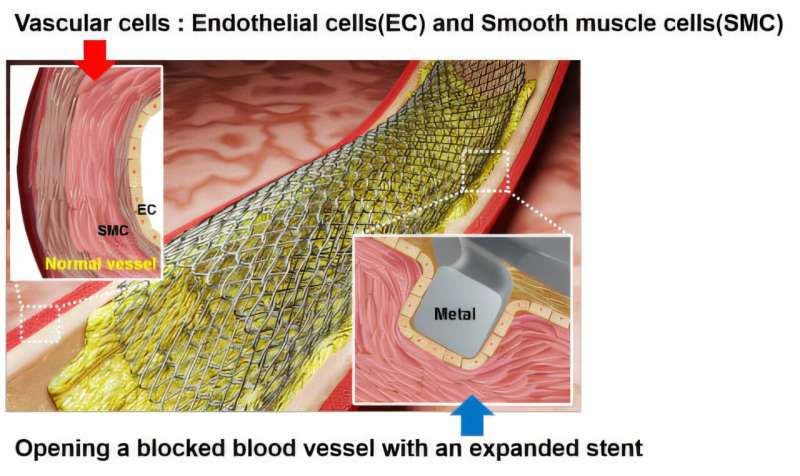By controlling cellular responses to nanostructured patterns, the technique holds promise for enhancing vascular recovery, especially when combined with chemical coating methods.
As South Korea approaches a super-aged society, the incidence of vascular diseases among the elderly population is rising, increasing the importance of therapeutic stents. These tubular medical devices maintain blood flow by expanding narrowed or blocked blood vessels. However, traditional metal stents may cause restenosis—a re-narrowing of the artery—due to excessive smooth muscle cell proliferation one month after implantation.
Drug-eluting stents are widely used to mitigate this issue but often inhibit vascular re-endothelialization, increasing the risk of thrombosis and necessitating the use of anticoagulants. To overcome these limitations, research into coating stent surfaces with bioactive molecules like proteins or nucleic acids is ongoing. However, these coatings often serve limited functions, falling short in accelerating endothelial cell proliferation.

